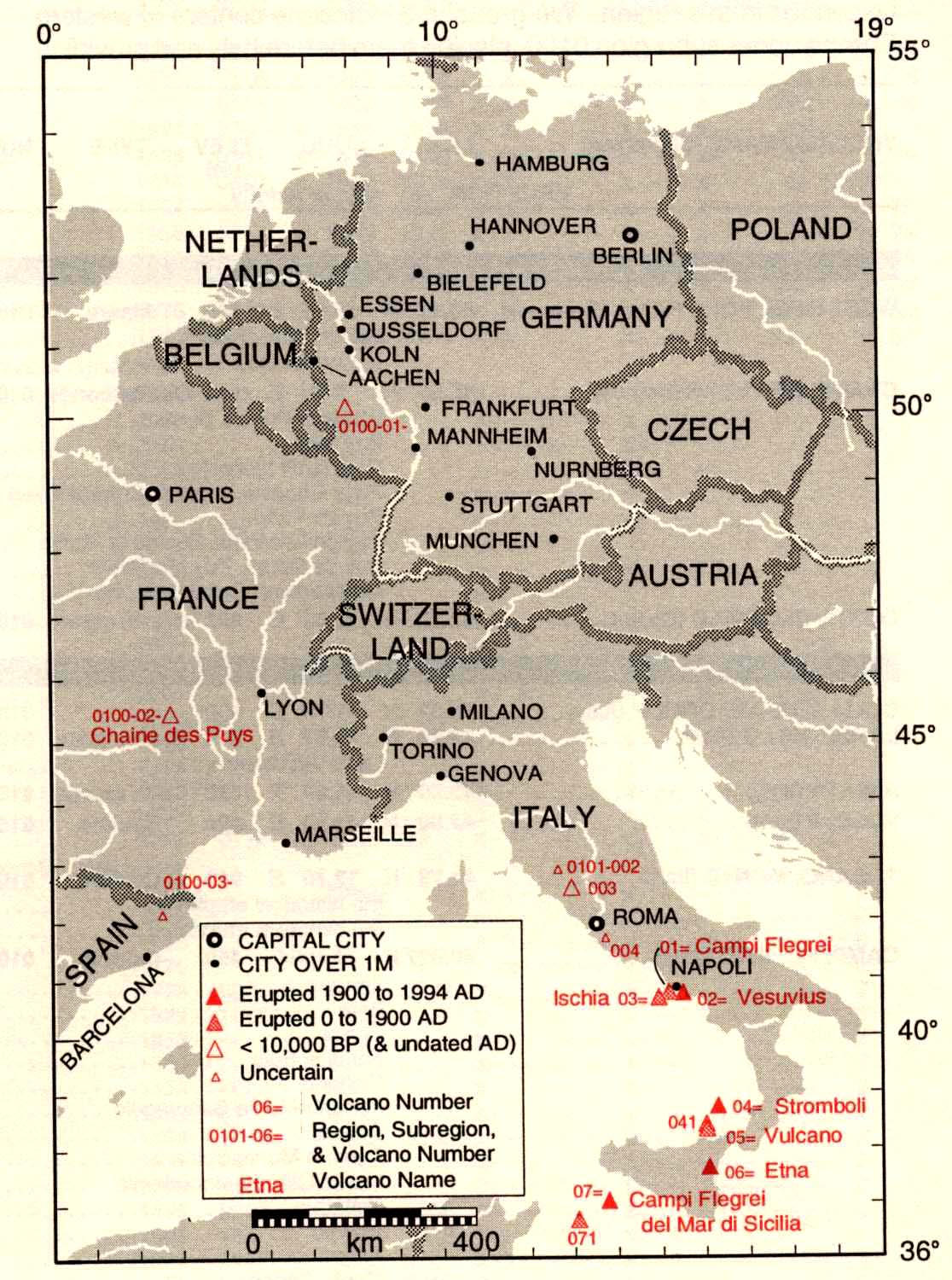
図1-1 イタリアの火山分布図(”Volcanoes of the world second ed.”より引用)
イタリアの活火山
1 はじめに
2001年9月16日から9月28日にかけて,荒牧重雄先生をリーダーとして,イタリア火山フィールドワークショップの巡検が行われた. その日程は以下のとおり.
9/16 成田空港発.同日夜ローマ空港着.貸切バスにてナポリへ.ナポリ泊.
9/17 ベスビオ火山観測所(Osservatorio Vesuviana)訪問.火山防災に関するワークショップ.博物館を見学.ベスビオ火山見学.ナポリ泊.
9/18 Pompei,Ercolano遺跡見学.ナポリ泊.
9/19 Campi Fregrei, Solfatara, Monte Nuove, Pozzuoliなど見学.夜行列車でNapoli発車中泊.
9/20 朝Milazzo着.船でStromboli 島着.Stromboli火山登頂,噴火を観察して下山.Stromboli 泊.
9/21 朝水中翼船(Aliscafi)にて Lipari 島へ.貸し切りバスにて島内一周.軽石丘,黒曜岩溶岩流,軽石採石場など見学.Lipari泊.
9/22 水中翼船で Vulcano 島へ渡る.Vulcano火山登頂.バスで島内見学.水中翼船にてシシリー島Milazzo へ.貸し切りバスで Catania へ.Catania 泊.
9/23 貸し切りバスで Etna 火山登頂.見学.(Catania 火山観測所より専門家の派遣を受ける). Catania 泊.
9/24 Catania 火山観測所見学.火山観測体勢などの説明を受ける.日本人側もポスターで研究発表.
貸し切りバスでEtna火山東麓Acicastelloの枕状溶岩見学.Catania泊.
9/25 Catania 空港発.イタリア中央防災局訪問見学(案).ローマ泊.
9/26 ローマ市内自由研修.
9/27 Roma発.ミラノ経由.
9/28 成田着.
本ページは以上の見学のレポートである. ところで,タイトルを「イタリアの活火山」としたが,これはわずか2週間たらずの早足の巡検レポートの題としてはいささか大げさに見えるだろう. 逆にもしもイタリアの火山学者が10日間ほど日本を見て回って「日本の活火山」などと題するレポートをこしらえるなどしたら,日本側としては目をむくところだろう. しかし,図1-1に示すように,イタリアの火山のうち,過去1万年以内に噴火した活火山の数は10個に過ぎず,日本で過去2千年以内に噴火した「活火山」の数80数個に比べれば,はるかに少ない. 本ページはその10個のうちの活動的なもの6個を見てきた報告であるが,これだけ短時間でポイントを押さえた見学ができたのは,ひとえに荒牧先生のリーダーシップの賜であり,まず最初にお礼を申し上げる次第です.

図1-1 イタリアの火山分布図(”Volcanoes of the world second ed.”より引用)
図中の番号は以下の火山に対応( )内は最新の噴火年 ★は訪問した火山
003 Vulsini (BC104)
Campi Flegrei (1538) ★
Vesuvius (1944) ★
Ischia (1302)
Stromboli (噴火続行中) ★
Lipari (729) ★
Vulcano (1890,1892?) ★
Etna (2001) ★
Campi Flegrei der Mar di Sicilia (1911)
Pantelleria (1891)
以下次のレポートにリンクします.
なお,引用した文献は以下のとおりです.
Barberi,F., Gasparini,P., Innocenti,F. and Villari,L.(1974) Volcanism of the Southern Tyrrhenian Sea and Its Geodynamic Implications.Jour.Geophys.Res., 78,5221-5232.
Barberi,F., Civetta,L., Gasparini,P., Innocenti,F., Scandone,R. and Villari,L. (1974) Evolution of a section of the Africa ? Europe plate boundary: paleomagnetic and volcanological evidence from Sicily. Earth Planet. Sci. Let., 22, 123-132.
Beccaluva,L., Gabbianelli,G., Lucchini,F., Rossi,P.L. and Savelli,C.(1985)Petrology and K/Ar ages of volcanics dredged from the Eolian seamounts: implications for geodynamic evolution of the southern Tyrrhenian basin. Earth Planet.Sci.Lett,74, 187-208.
Ellam,R.M., hawkesworth,C.J., Menzies,M.A. and Rogers,N.W. (1989) The Volcanism of Southern Italy: Role of Subduction and the Relationship Between Potassic and Sodic Alkaline Magmatism.Jour.Geophys.Res., 94,4589-4601.Gioncade,A., Clocchiatti,R., Sbrana,A., Bottazzi,P., massare,D. and ottolini,L. (1998) A study of melt inclusions at Vulcano (Aeolian Islands,Italy):insights on the primitive magmas and on the volcanic feeding system. Bull.Volcanol.,60,286-306.
Gvirtzman,Z. and Nur,A. (1999) The formation of mount Etna as the consequence of slab rollback. Nature, 401,782-785.Orsi,G., Di Vito,M. and Isaia,R. (eds) (1998) Volcanic hazards and risk in the parthenopean megacity. Cities on volcanoes international meeting field excursion guidebook. 204p. Osservatorio Vesuviano,Naples, Italy.
Sheridan,M.F., Barberi,F., Rosi,M. and Santacroce,R.(1981) A model for Plinian eruptions of Vesuvius., Nature, 289,282-285.
Schiano,P., Clocchiatti,R., Ottolini,L and Busa T. (2001) Transition of Mount Etna lavas from a mantle-plume to an island-arc magmatic source. Nature, 412,900-904.
Tanguy,J.C. (1978) Tholeiitic basalt magmatism of Mount Etna and its relations with the alkaline series. Contrib.Mineral.Petrol., 66,51-67.
Tanguy,J-C., Condomines,M. and Kieffer,G. (1997) Evolution of the Mount Etna magma: Constrains on the present feeding system and eruptive mechanism. Jour. Volcanol.Geotherm.Res., 75,221-250.
The Research staff of the Instituto Nazionale di Geofisica e Vulcanologia ? Sezione di Catania, Italy (2001) Multidisciplinary approach yields insight into Mt.Etna eruption. Eos, 82, No.52, 653-656.